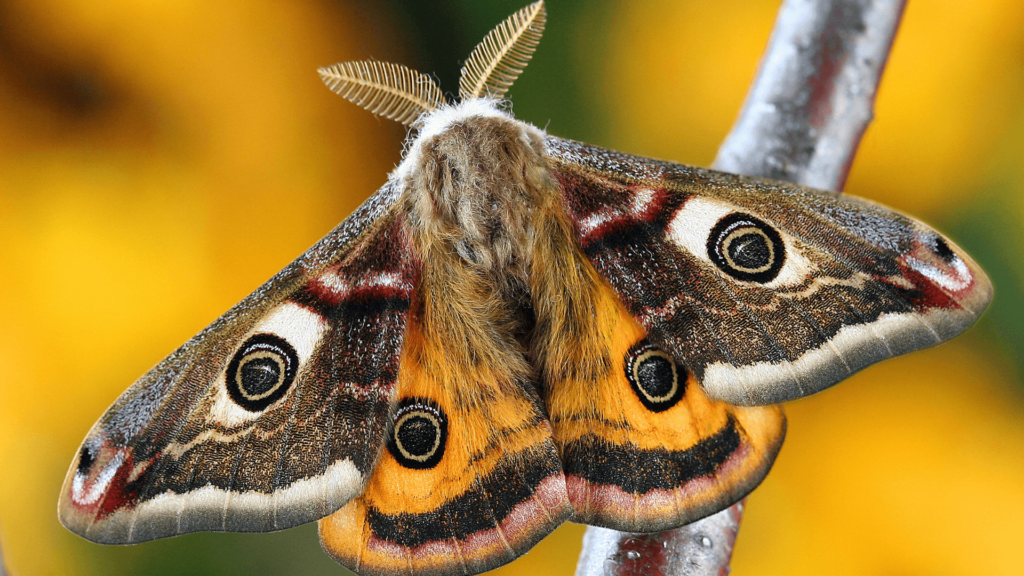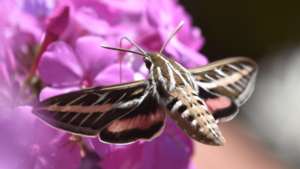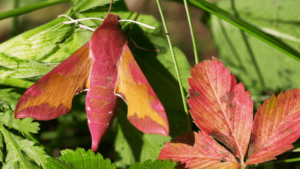All About Moths: Discover Fascinating Facts and Behavior of These Silent Night Flyers

Moths, often mistaken for butterflies or bees, are fascinating creatures that deserve our attention and understanding. Contrary to popular belief, moths can be active during daylight hours, with some even mimicking wasps or bees to visit flowers for nectar.
They can be found in various habitats, except for polar regions, and are known for their wings, bodies, and legs covered in delicate scales. With over 200,000 species, moths have evolved diverse adaptations, including mimicry, as a defense mechanism.
While primarily nocturnal, these noiseless nighttime flyers have much to teach us about their intriguing behaviors and survival strategies.
So, before accessing the hidden world of moths, let's delve into their captivating world and uncover their interesting information and habits.
What Are Moths?
Moths are a captivating species that often go unnoticed during the day but come alive at night. These soundless night-time flyers boast a unique beauty and attractiveness that sets them apart from other insects.
Covered in delicate wings and dust-like scales, these creatures are often confused with butterflies, bees, or even hummingbirds. With over 200,000 species distributed around the world, moths are a diverse group that should be appreciated.
Moths have incredible adaptability when it comes to their habitats. Although they can be found in many places, they usually avoid polar areas. From tropical rainforests to deserts, moths thrive and manage to survive in a wide range of environments.
Whether it's the hustle and bustle of a city or the tranquility of the countryside, these creatures can be spotted fluttering around, searching for light and sustenance.
Another special trait of moths is their habits and behaviors. Mainly nocturnal, some species are active during the day, like the clearwing moths.
Those insects imitate wasps or bees to visit flowers for nectar, showing their versatility and adaptability.
Whether they are soaring silently in the night or sipping nectar from dayflowers, moths are automatic and impressive and should be studied and admired.
Where Do Moths Live?
Moths are remarkable for their adaptability, residing in a broad array of habitats around the world, from tropical rainforests to arid deserts. Everywhere from forests, meadows, gardens, and cities, these creatures have demonstrated their strength and tenacity in every continent, except for the frigid poles.
From the luxuriant jungles of South America to the barren deserts of the Sahara, moths have proven their resilience.
Though commonly thought of as night-time fliers, certain moths are also diurnal, easily mistaken for butterflies, bees, or hummingbirds. These day-active moths can be spied in open meadows, blooming gardens, and even bustling city parks.
Their capacity to thrive in different environments and their diverse activity patterns make moths a captivating insect to observe and appreciate.
So, the next time you are out and about, keep your eyes peeled for these elusive insects, camouflaged in plain sight.
What Do Moths Look Like?

Moths captivate with their remarkable physical characteristics. Dusty scales cover their bodies, creating a powdery look, while a rainbow of colors and intricate patterns adorn their wings.
These delicate insects come in varying sizes, from a few millimeters to several inches in wingspan. And yet, despite their light frame, they are able to soar through the night sky with graceful agility.
Moths are also drawn to sources of light, meaning you may come across many of them near porch lights or street lamps.
Revel in the beauty of moths with each encounter. Their ethereal presence captivates, allowing you to reload and rediscover the enchanting world of these nocturnal flyers. Take a closer look and you will find yourself spellbound by their silent movements, fluttering from flower to flower, or gliding through the air.
Experience the beauty of moths and be amazed at what you find.
How Many Species of Moths Are There?
Uncovering the quantity of moth species out there is a question that might not have a straightforward answer. Over 200,000 of these nocturnal flutterers have been identified, each possessing its own distinct characteristics and adaptations. Examining the plethora of moth species can be an alluring activity for nature lovers.
Prepare to be amazed by the stunning variety of moths in your browser.
The world of moths is vibrant and offers a wide range of species. From the intricately designed geometrid moths to the vivid tiger moths, the assortment of moths is stunning. Scientists hypothesize that there are still more moth species to be uncovered in unexplored habitats.
With continued research and technological progress, our grasp of the number of moth species remains ever-evolving. So, stay alert for new findings and updates on the expanding list of moth species.
When attempting to ascertain the exact number of moth species, one must take into account the various difficulties that come with identifying and categorizing them. Species of moths may have intricate patterns and colors that make them hard to differentiate from one another.
Various variations within species and regional discrepancies can also complicate the process of accurately counting the number of moth species. However, researchers are working diligently to enhance our understanding and provide a more precise estimate.
Thus, while the number is not definitive, the world of moths is a never-ending source of fascination and curiosity.
Do Moths Need Attention?
Moths often fly under the radar, yet they are critical to the health of our environment. Pollinating plants and providing sustenance to other animals, these creatures are essential participants in the natural world.
Unfortunately, moths are not always given the attention they deserve, and the consequences of this negligence can be dire.
Threats such as habitat destruction, light pollution, and pesticide use are contributing to the decline of moth populations. To ensure the longevity of our ecosystems, it is necessary to recognize the significance of moths and take action to protect them.
Raising awareness is the key to protecting and preserving habitats, and there are numerous ways to do so.
By speaking up for these creatures, we can help to ensure a future where moths can continue to play their vital role in the grand scheme of things.
What Is the Purpose of Moth Mimicry?

Mimicry is a vital ability for moths in their quest for survival. Employing Batesian mimicry, they replicate the appearance and behavior of other animals, such as wasps or bees, to deter potential predators. This allows them to blend into their environment and remain undetected. It is a stunning example of the resourcefulness of these nocturnal creatures.
The use of moth mimicry is not confined to mere survival. It also plays a key role in the pollination of plants. For instance, clearwing moths mimic bees or wasps while collecting nectar from flowers during the day.
By doing so, they can access the flowers without being detected.
In the process, they transfer pollen from one flower to another, thus furthering the reproduction of plants. This content-sharing between moths and plants serves as an illustration of the intricate balance that exists in nature.
Through mimicry, moths protect themselves while contributing to the pollination process. An impressive adaptation that has endured the test of time.
Are Moths Primarily Nocturnal?
Moths are creatures of the night. By nature, they exhibit nocturnal behavior, taking advantage of the low light conditions to more easily navigate and locate food sources.
Their eyes are specially adapted to dim light, enabling them to remain active even when the sun has set.
This adaptive strategy also helps them elude the many predators that come out during the day.
Nocturnality is the key feature of moths. They thrive in darkness, exploiting the cover of night to feed and move without fear of being detected. This trait is bolstered by their eyes, which are sensitive to the faintest glimmers, allowing them to function even in the gloomiest environments.
Additionally, they benefit from the lack of daytime predators on the prowl.
The darkness of night is a moth's domain. Their vision is attuned to the faintest glimmers, granting them the ability to prowl and scavenge without fear of detection.
This is in contrast to the predators that lie in wait during the day.
Furthermore, their nocturnal habits provide them with the cover they need to feed and move freely.
Conclusion
In conclusion, moths are fascinating creatures that deserve more attention and appreciation.
They may be often overlooked in favor of their more colorful butterfly relatives, but moths have their own unique beauty and habits.
From their nocturnal nature to their diverse species and mimicry abilities, moths have carved out a special niche in the natural world.
So, next time you spot a moth fluttering by on the noiseless wings of the night, take a moment to appreciate the intricacies of these remarkable creatures.
By shedding light on the wonders of moths, we can gain a deeper understanding of the delicate balance of the ecosystem and the intricate web of life.

Leave a Reply